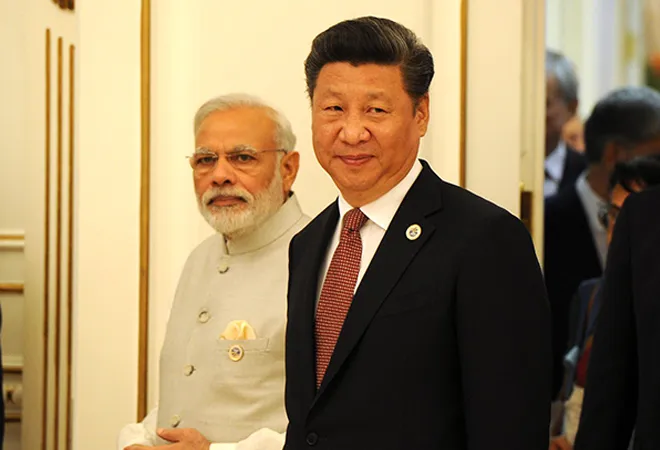After some uncertainty, India and China made near-simultaneous announcements about the visit of the Chinese President, Xi Jinping, for an informal summit with Prime Minister Narendra Modi. The inaugural informal summit between the two leaders was held in Wuhan, China, in April 2018, just months after a 73-day long face-off between the armies of the two countries in the Doklam tri-junction in Sikkim. The Wuhan summit was critical in lowering the temperatures . With Modi and Xi deciding to issue “strategic guidance” to their militaries to strengthen communication and build trust and understanding, the two nations signalled their resolve to maintain stability at the borders.
The second summit is happening against the backdrop of India’s decision to effectively nullify Article 370 of the Constitution. Beijing has opposed the move, and actively colluded with Pakistan internationally.
In fact, Xi’s visit to India was announced at a time when Pakistan Prime Minister, Imran Khan, and army chief, General Qamar Javed Bajwa, were in China. Much was made in sections of the Indian media of Chinese foreign ministry spokesman Geng Shuang’s comments that Kashmir issue should be resolved between New Delhi and Islamabad, omitting its recent references to the United Nations (UN) and UN Security Council resolutions. But it was followed by Xi’s comments that he was watching the situation in Kashmir and would support Pakistan in issues related to its core interests. Delhi responded by reiterating its position that this was an entirely internal affair.
The second informal summit should ideally have built on the Wuhan engagement, where Modi and Xi had agreed that “the two countries have the maturity and the wisdom to handle all our differences through peaceful discussion within the context of this overall relationship and bearing in mind that we would respect each other’s sensitivities, concerns and aspirations”. But it is quite clear that Beijing has no interest in adhering to that spirit. Many in India will question why the nation should be hosting the president of a nation, which is hardly interested in having a productive partnership with India.
But India needs stable relations with China, its most important neighbour. It is imperative for the top leadership in both nations to be engaged with other regularly. And informal summitry, with no pressure of deliverables, is an effective method of putting one’s points forward. It is equally pertinent to note that this is an important moment in the global geopolitical environment.
China is under immense pressure from the US and its own internal economic slowdown. The turmoil in Hong Kong is tarnishing the image of an uber-efficient Chinese Communist Party, even as the Uighur issue is now under new scrutiny with America blacklisting 28 Chinese companies and government agencies over Beijing’s treatment of Uighur Muslims and other predominantly Muslim ethnic minorities. This gives India some space for manoeuvrability which it didn’t have earlier.
New Delhi has also sent its own set of signals to China that it seeks strict reciprocity in bilateral engagement. The Modi-Xi summitry will happen weeks after Modi’s American outreach. Burgeoning Indo-US ties have always impacted China’s approach towards India. The cancellation of last month’s planned visit by the Chinese state councillor and foreign minister, Wang Yi, to India for boundary talks with national security adviser Ajit Doval, and external affairs minister, S. Jaishankar’s participation in the upgraded ministerial level meeting of the Quadrilateral Security Dialogue (Quad) involving the US, Japan, Australia and India in New York were important indicators underscoring India’s displeasure at Chinese policies.
Indian armed forces have also done their bit with an integrated exercise in Ladakh last month, and Operation ‘Him Vijay’ in Arunachal Pradesh, days before Xi’s arrival in India. Beijing, of course, is past master of this kind of signalling but New Delhi’s intent is to make it clear to China that at a time when China is under pressure, India too can raise the stakes. The debate on 5G remains unresolved in India, but it is moving in a direction which Beijing may not like.
As a result, in more ways than one, the ball is now in Xi’s court to demonstrate his seriousness about mending fences with India. Otherwise, informal summitry at Mamallapuram will end up as a mere spectacle and New Delhi will continue to frame its policies assuming the worst about Chinese intentions. And that won’t help either of the Asian powers.
This commentary originally appeared in Hindustan Times.
The views expressed above belong to the author(s). ORF research and analyses now available on Telegram! Click here to access our curated content — blogs, longforms and interviews.




 PREV
PREV


